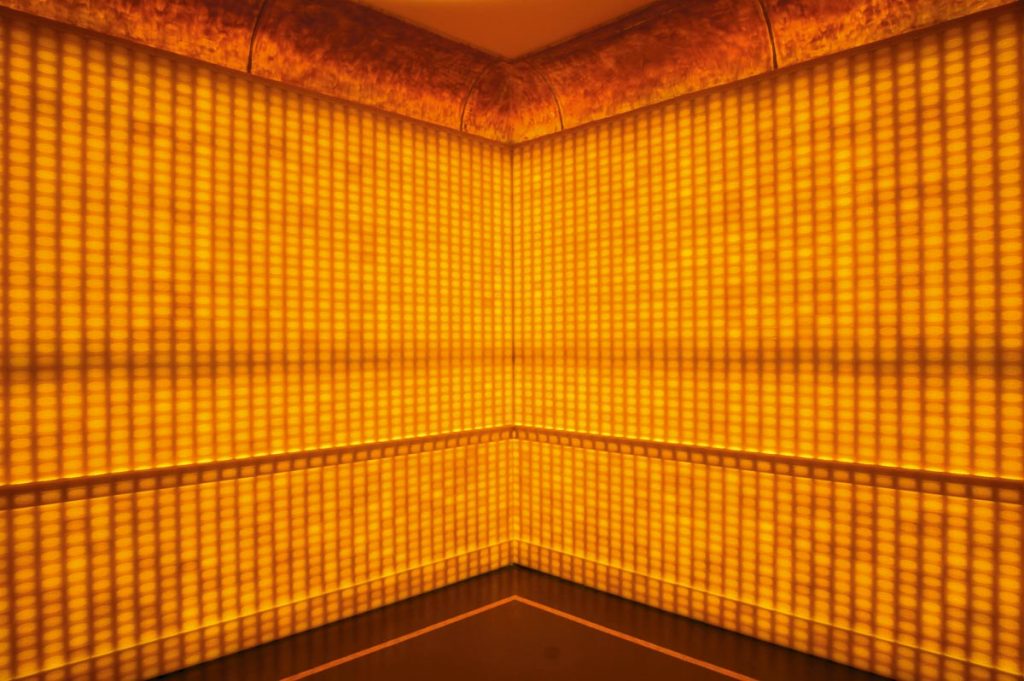
With her appealing installation in the original dimensions of the first Amber Room, which reflects the Prussian love of proper scale, and the use of such a common material as soap, Ingeborg Lüscher avoids all reference to historical or contemporary pomp, discretely but unmistakebly. With her minimalist architectural concept and the sunny yellow light, she has created a contemporary Amber Room in which the distant beauty and the sad histories of the lost Amber Room appear to be captured – in a setting of meditative serenity and immediate aesthetic presence.
Konstanze Crüwell 2004
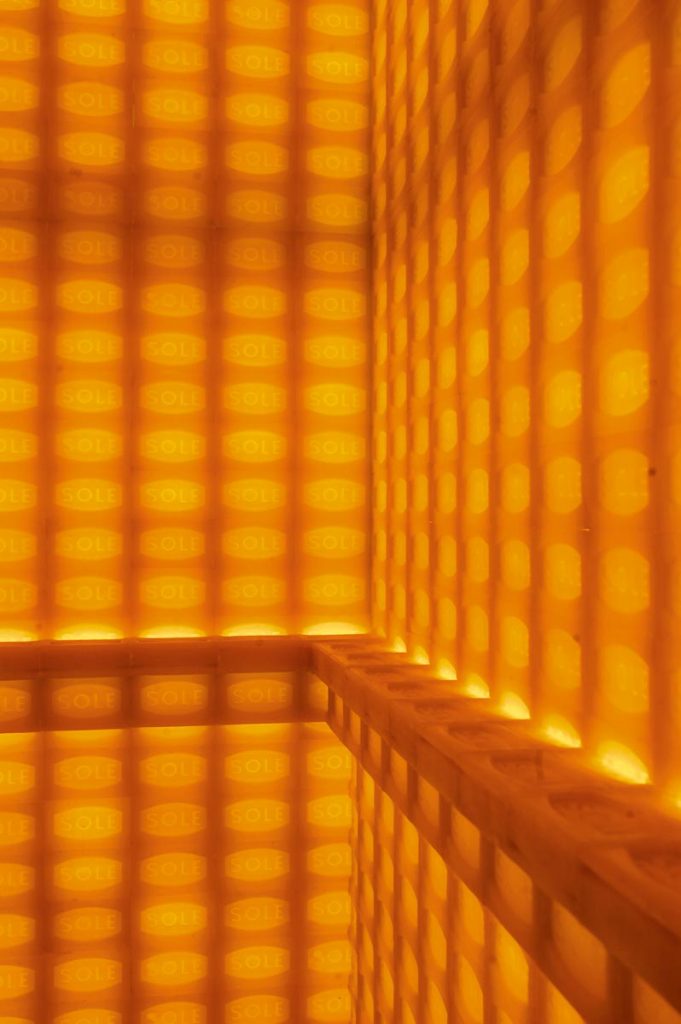

Ingeborg Lüscher’s Amber Room belongs to the category of strokes of luck, because as long as one looks at it, as long as one stands before and in it and contemplates it, it remains unconstrained, pleasurable in all the earnetnesse, all the conceptualisation and all the work that has gone into it. It is an example of Ars pulchre cogitandi, the art of fine thinking, the aesthetic of which grasps all perception, sensory as well as spiritual, ordinary as well as sublime, worldly as well as artistic. Never before has ordinary soap been used to explore the aesthetic question of the difference between simulation and original. … Today there are four Amber Rooms: Friedrich’s first version as initial gesture, the lost expanded original from Elisabetta for mythos, the real room in Tsarkoe Selo for pride and the ideal of Ingeborg Lüscher for aesthetic experience.
Juri Steiner 2004
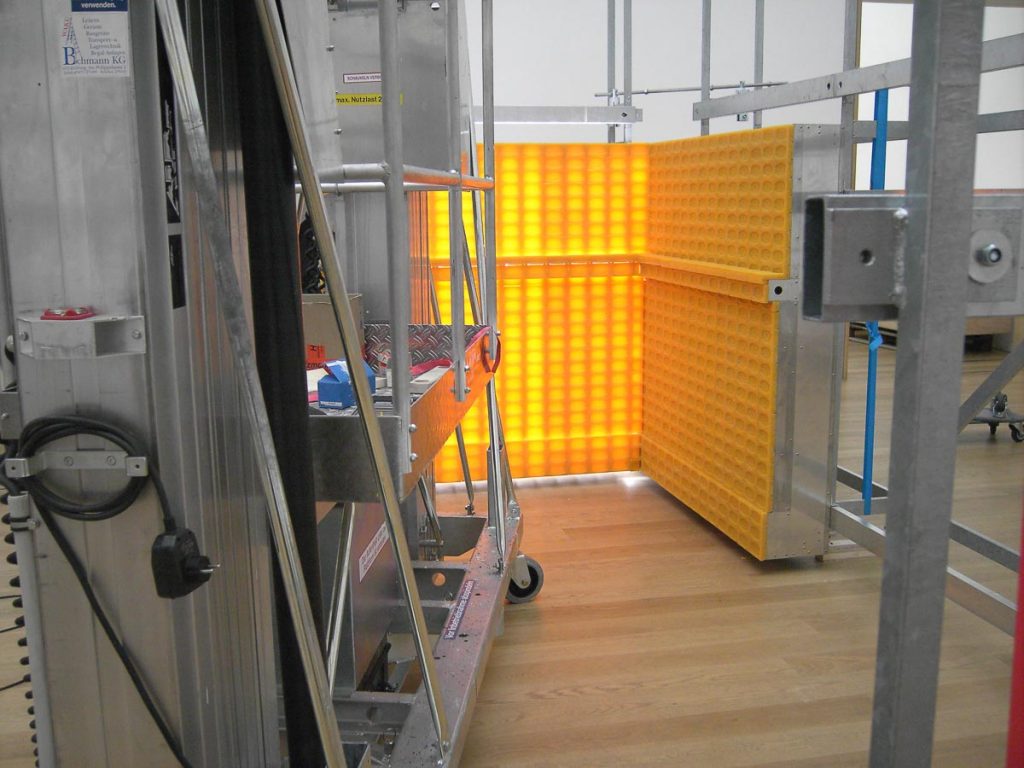
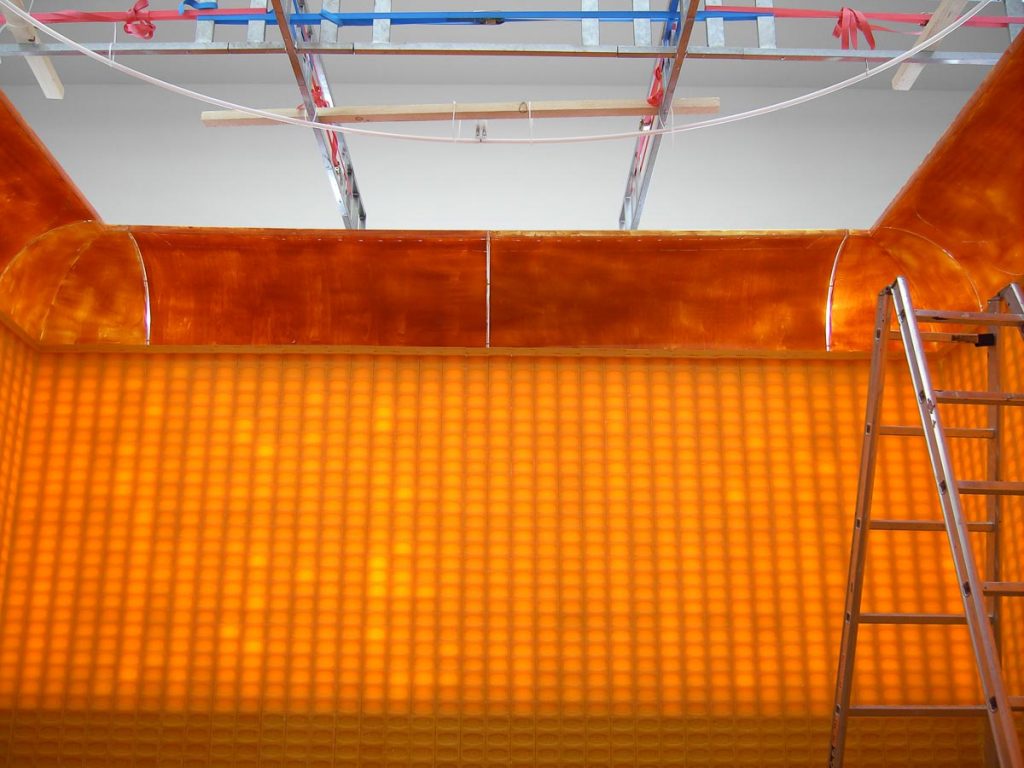
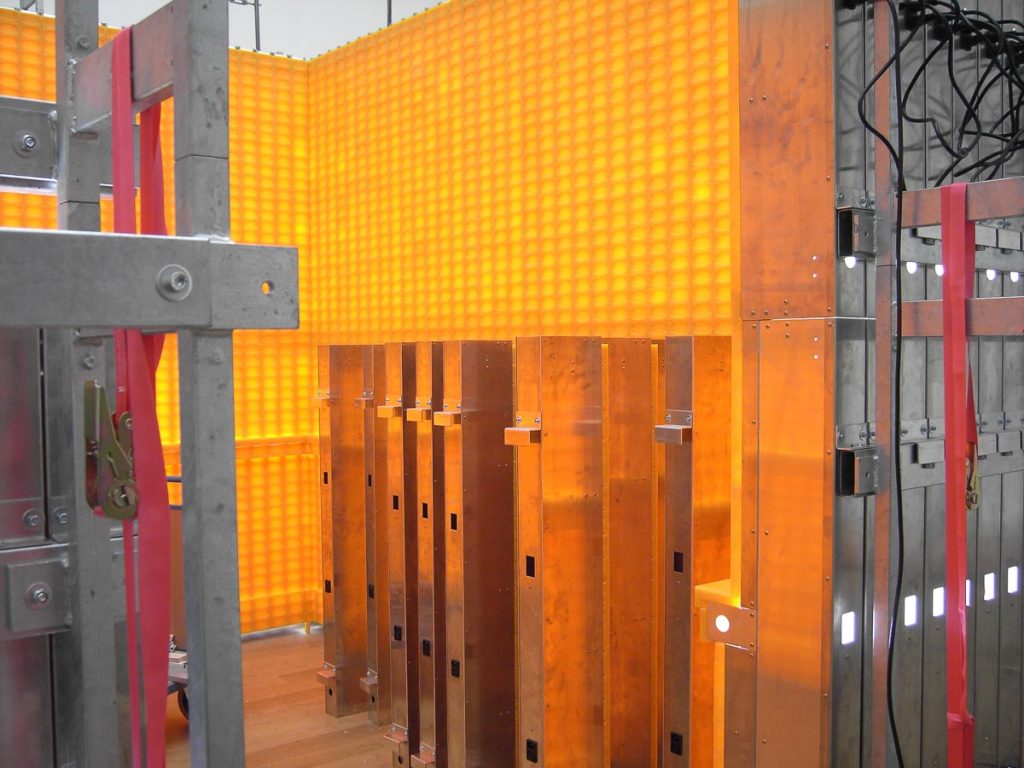
IL906
The Amber Room, 2001-2004
Das Bernsteinzimmer, 2001-2004
Room installation
9000 pieces of SOLE soap
(6.5 x 11 x 3.8 cm, each)
Neon tubes, aluminium, steel, painted acrylic glass, wood, cloth
450 x 580 x 580 cm (outside)
350 x 400 x 400 cm (inside)
Entrance area with historical informations (different dimensions)
Two existing copies
Concept and direction:
Ingeborg Lüscher
Technical realization:
Dimitri Westermann
General Management:
Aufdi Aufdermauer
With the support of Reckitt Benckiser, Milano
One copy:
Stiftung Situation Kunst, Ruhr-Universität Bochum, 2021
Exhibitions
Svarovski Kristallwelten, Wattens 2004
MART Rovereto 2004
Svarovski Kristallwelten, Wattens 2005
Museum Wiesbaden 2006
Ausstellungshalle Kraft, Basel 2008
Kunstmuseum Solothurn 2016
Kunstmuseum Bochum 2021-2022
Catalogues
Rovereto 2004, pp 196-199 (ill)
Wiesbaden 2006, pp 7-11 (ill)
Solothurn 2016, pp 192-201 (ill)
Texts
Braun 2004 . Crüwell 2004. Steiner 2004. Huther 2006. Müller 2016, pp 155, 162, 163. Vögele 2016, pp 20, 34
Monographs
Wattens 2004
Photography
Rudolf Steiner
Ed Restle (installation shots Museum Wiesbaden)
Print